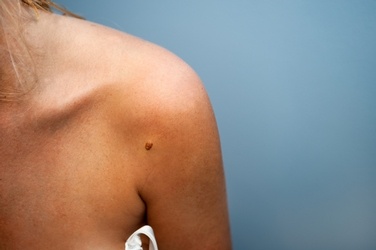Cancer is a scary word. When you hear it, you may think cancers that affect internal organs such as the lungs, pancreas, or colon. But what about your body’s largest organ? Our skin is our first line of defense against environmental pollutants and the elements. It also happens to be our largest organ. Not only this, but cancers of the skin are by far the most common affecting our population today. In fact, skin cancer has impacted more people over the past three decades than all other cancers combined. Scarier still, this is the fastest growing form of cancer among young people.
Fortunately, despite its prevalence, skin cancer is also largely preventable, and when existing cases are detected early, the cure rate is incredibly high at nearly 100 percent. The steps you should take to protect yourself or your children from skin cancer are easy to implement and highly effective. In honor of Skin Cancer Awareness Month, here are a few:
Daily Sunscreen – Sunscreen is our first line of defense against the sun’s harmful UV rays, and it comes in many easy-to-use forms such as sprays and lotions. In general, those that offer the most protection are labeled as broad-spectrum (protecting against both UVA and UVB rays), waterproof, and have a sun protection factor of 30 or above.
Protective Clothing – Clothing can also protect skin against the damaging effects of the sun. If you know that you’ll be outdoors for an extended period of time, choose options that offer more coverage such as long-sleeved shirts, wide-brimmed hats, and sunglasses with UV protection.
Seek Shade – Staying out of the sun entirely is ideal when rays are at their strongest. This usually occurs between the hours of 10AM and 4PM. While you can still be exposed to UV light outside of these hours, the rays are typically much weaker. Additionally, avoid unnecessary exposure through artificial light sources such as tanning beds. Using these devices before the age of 35 can increase the risk of melanoma, the deadliest form of skin cancer, by 75 percent.
Skin Checks – The vast majority of skin cancer cases begin as a noticeable lesion or growth on the skin. Detecting these early can be life-saving. This means that all individuals should be performing regular, thorough skin checks. Keep in mind that these spots can appear anywhere including the scalp, soles of the feet, behind the ears, or in between fingers and toes, so it is imperative to observe the entire surface of the skin. During these checks, you should not only be looking for new growths, but those that meet the following ABCDE criteria:
- Assymetry (one half does not match the other)
- Border (irregularly shaped)
- Color (multiple colors in one lesion)
- Diameter (larger than a pencil eraser)
- Evolving (has changed since your last check)
Skin cancer is our nation’s most common form of cancer, but it doesn’t have to be. Protect yourself, and encourage your loved ones to do the same. Use the steps listed above, and you will greatly reduce the risk of not only skin cancer but other forms of skin damage as well.




